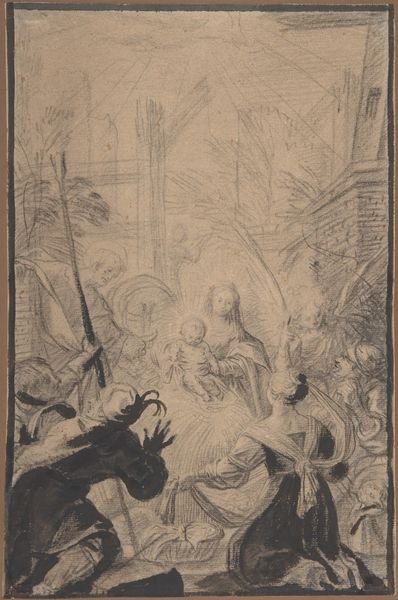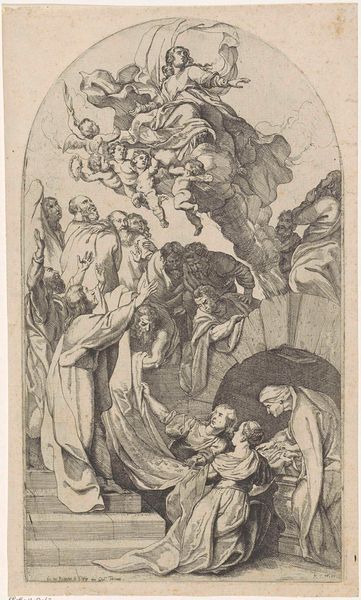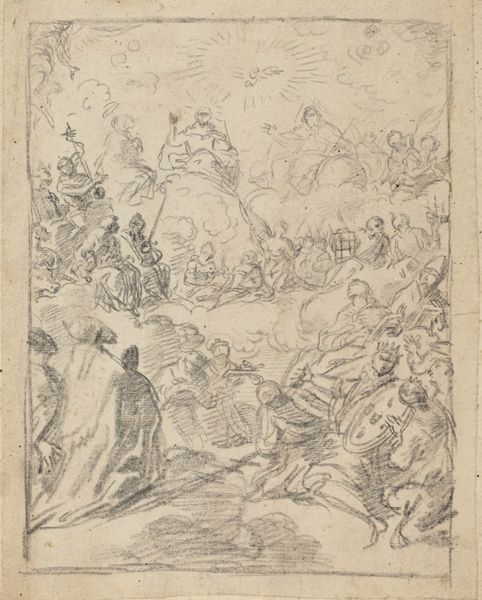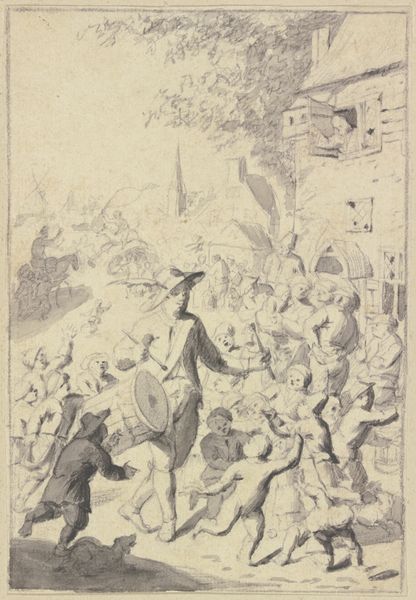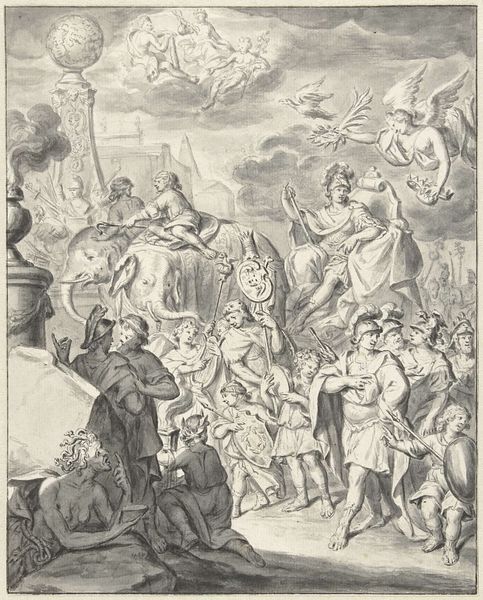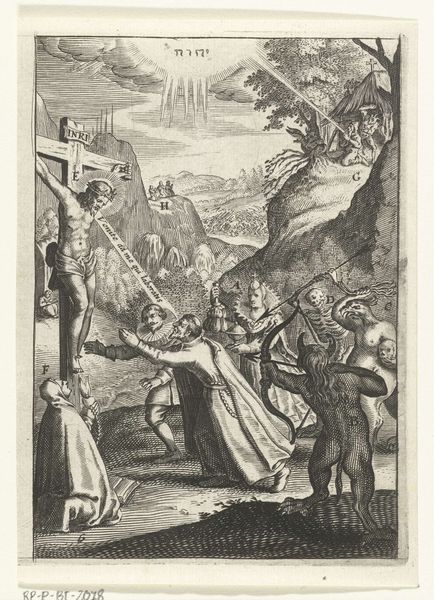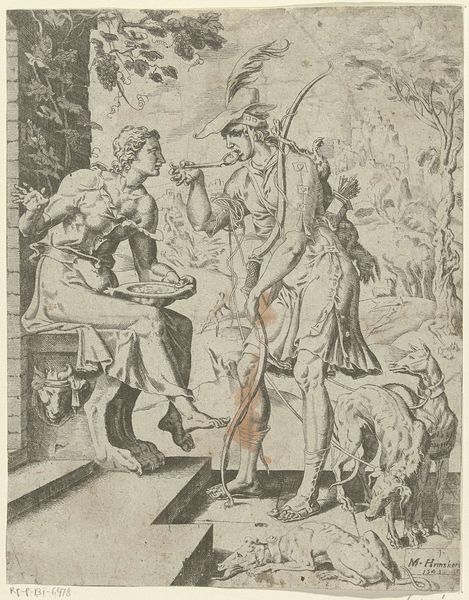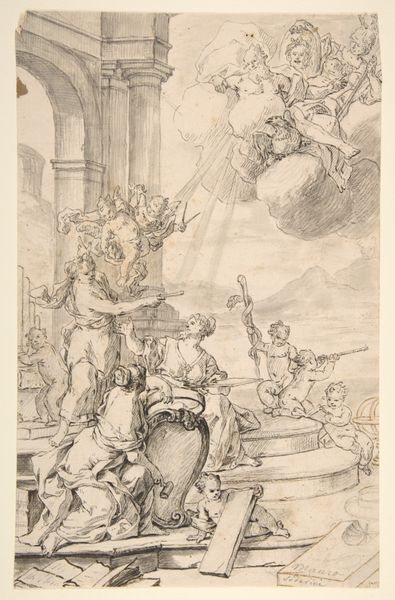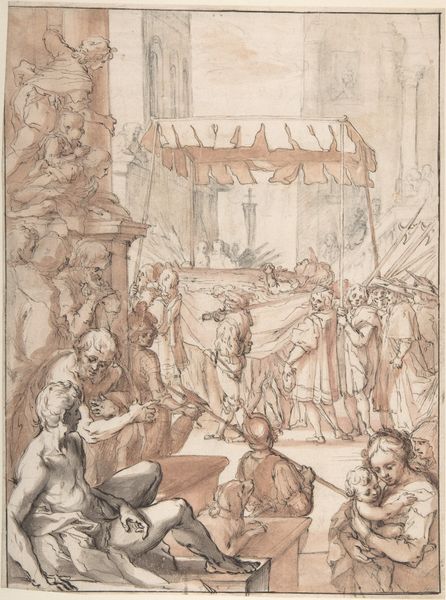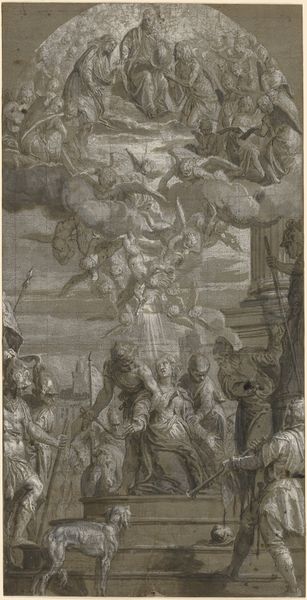
drawing, ink
#
drawing
#
allegory
#
baroque
#
figuration
#
ink
#
line
#
history-painting
#
academic-art
Dimensions: height 105 mm, width 62 mm
Copyright: Rijks Museum: Open Domain
Curator: Looking at this drawing from the early 18th century, tentatively titled *Allegory of Science,* one sees a world steeped in Baroque idealism and academic artistry, deftly rendered in ink using line techniques. What are your immediate thoughts? Editor: Well, initially, the monochromatic wash creates a somewhat subdued atmosphere despite the dynamic composition. There's a struggle apparent— between order and chaos, darkness and light—reflecting the socio-political undercurrents of the time, wouldn’t you agree? Curator: I concur. The very premise of Science, viewed as allegory, ties to prevailing notions of understanding and the power structures inherent to academia. Consider the central figure, likely a sage, draped and gesturing towards a celestial figure enthroned upon clouds, seemingly beaming enlightenment from the very heavens. Editor: Yes, this "enlightenment" itself demands a critical lens. Who does this benefit? Who has access to this elevated form of knowledge? Note the varied positioning and apparent servitude of the surrounding figures. Curator: Precisely! The composition emphasizes an established order, yet it also gestures towards aspirations and social elevation. Take note of how the draped curtains and classical architecture frame the scene. The line work has precision. Editor: However, there’s also something unsettling. An unease brought about by the sketch-like quality in parts. It feels like a plan, or even an incomplete vision, of societal ‘progress’, particularly the way a centralized and authoritarian ‘knowledge’ reproduces power and control. Curator: I see your point. Though its message feels like a proclamation of science and learning, there's a definite tension underlying it all, leaving the viewer with a lingering question. This piece acts almost as a window into past debates on knowledge accessibility, while also posing present-day queries. Editor: Absolutely, a pastiche, or at best, a point of reflection for our own ongoing reevaluation of historical ideology and our search for authentic inclusivity and fair representation across socio-economic structures.
Comments
No comments
Be the first to comment and join the conversation on the ultimate creative platform.

